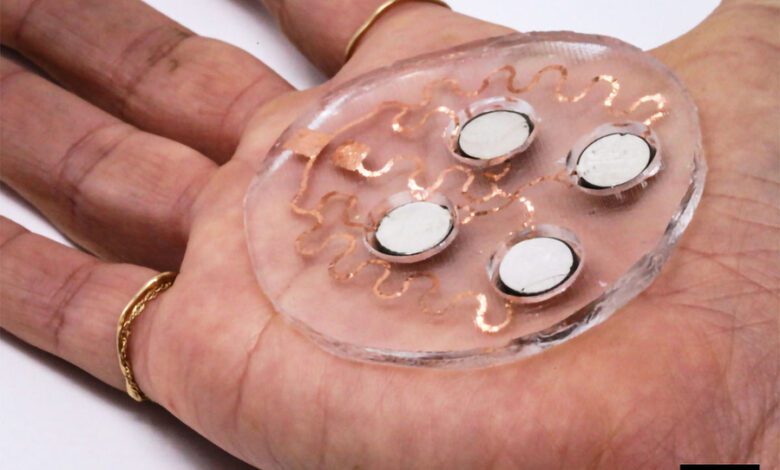No more pills or injections: Scientists introduce painless drug delivery through skin
The researchers at MIT unveiled it the technology that transfers drug using 'ultrasonic waves'

MIT researchers have developed a cutting-edge technology that could revolutionize treatments for a variety of skin conditions, as well as offering targeted drug delivery for medical and cosmetic applications by a wearable patch that delivers drugs painlessly through the skin, using ultrasonic waves.
The team calls the system a Conformable Ultrasound Sonophoresis Patch (cUSP), and it’s contained in a hydrogel that sticks to the wearer’s skin. Inside the patch are four transducers connected by copper traces to conduct electricity. Above each transducer is a cavity containing the drug molecules dissolved in a liquid, and when the transducers receive power, they vibrate and create bubbles in the liquid. This in turn creates microjets of fluid that fire through the tough outer layer of skin.
The skin, an attractive route for drug delivery, allows direct administration to the site of need. However, delivering drugs through the skin has always been a challenge due to its tough outer layer.
The patch creates tiny channels that drugs can pass through. Such an approach could enable the delivery of treatments for a variety of skin conditions, according to the team. They also believe they can adapt it to deliver hormones, muscle relaxants and other drugs.
“The ease-of-use and high repeatability offered by this system provides a game-changing alternative to patients and consumers suffering from skin conditions and premature skin aging,” said Canan Dagdeviren, an associate professor in MIT’s Media Lab and the senior author of the study. “Delivering drugs this way could offer less systemic toxicity and is more local, comfortable, and controllable.”
The lightweight, wearable patch is embedded with disc-shaped piezoelectric transducers that convert electric currents into mechanical energy. When activated, these transducers generate pressure waves in the fluid, creating bubbles that burst against the skin. The microjets produced by the bursting bubbles penetrate the skin’s tough outer layer, allowing drugs to enter the body.



